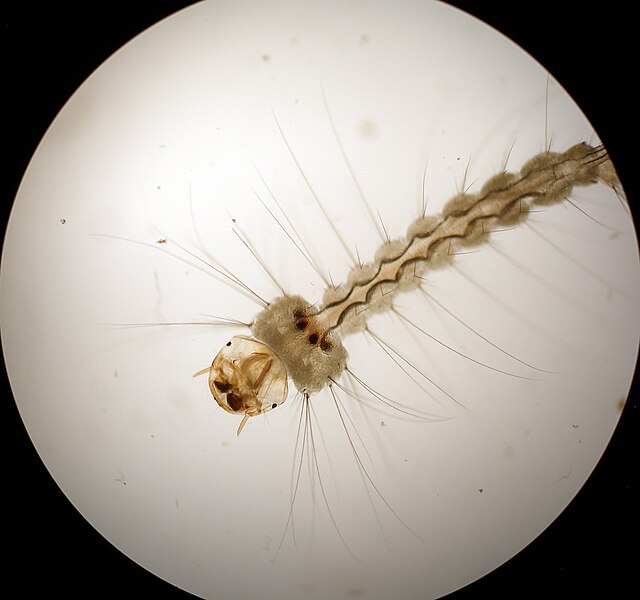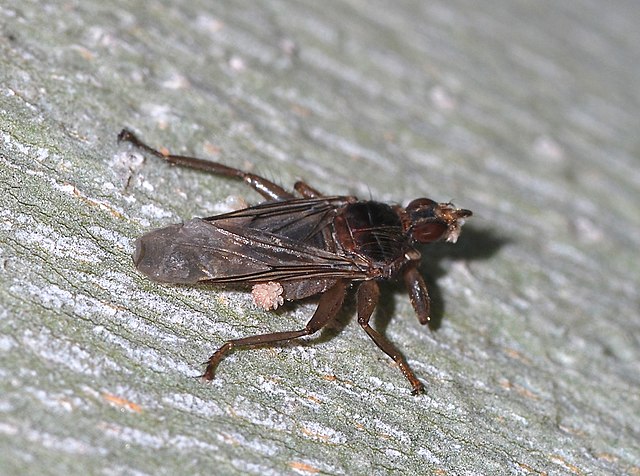In zoology, an inquiline is an animal that lives commensally in the nest, burrow, or dwelling place of an animal of another species. For example, some organisms, such as insects, may live in the homes of gophers or the garages of humans and feed on debris, fungi, roots, etc. The most widely distributed types of inquiline are those found in association with the nests of social insects, especially ants and termites – a single colony may support dozens of different inquiline species. The distinctions between parasites, social parasites, and inquilines are subtle, and many species may fulfill the criteria for more than one of these, as inquilines do exhibit many of the same characteristics as parasites. However, parasites are specifically not inquilines, because by definition they have a deleterious effect on the host species, while inquilines have not been confirmed to do so.
Wyeomyia smithii larva is an inquiline species in the pitcher leaves of Sarracenia purpurea (magnification 40X).
Commensalism is a long-term biological interaction (symbiosis) in which members of one species gain benefits while those of the other species neither benefit nor are harmed. This is in contrast with mutualism, in which both organisms benefit from each other; amensalism, where one is harmed while the other is unaffected; and parasitism, where one is harmed and the other benefits.
Remora are specially adapted to attach themselves to larger fish (or other animals, in this case a sea turtle) that provide locomotion and food.
Phoretic mites on a fly (Pseudolynchia canariensis)
Inquilinism: Tillandsia bourgaei growing on an oak tree in Mexico




